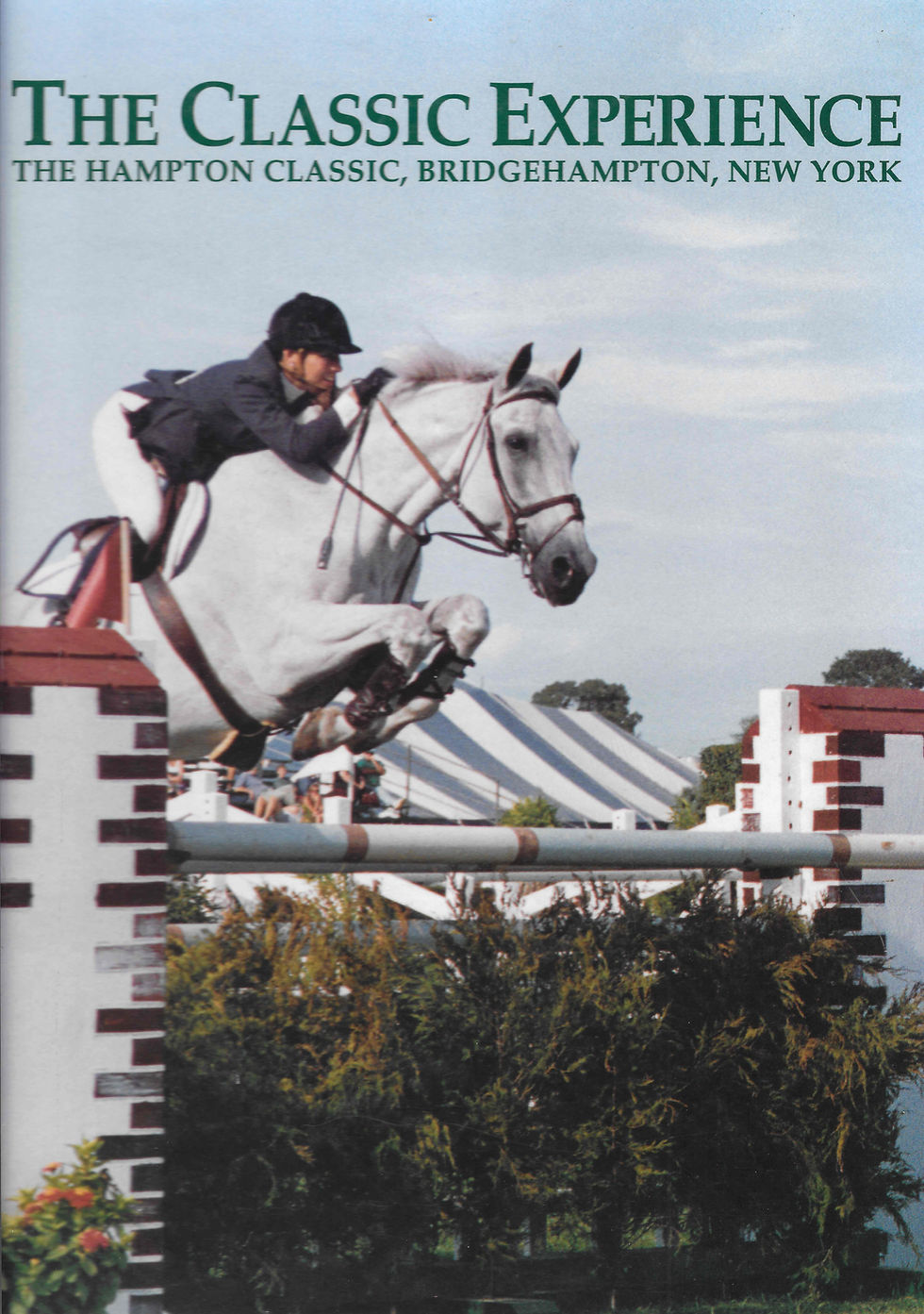Southampton Horse Association
- Mary Cummings

- Jun 30, 2020
- 4 min read
Updated: Aug 26, 2022


With all the attention that has been paid to Southampton’s club life in the Gilded Age, how is it that summer society’s infatuation with all things equestrian, encouraged and organized by the Southampton Horse Association (SHA), has been all but forgotten. SHA activities ranged from keen competition on the polo field and heart stopping action on the hurdle course to the complete social silliness of the Gretna Green pony race. Hailed in the The New York Heraldas “one of the most picturesque outdoor events of the season,” it was attended, wrote the The New York Herald correspondent, by “Society folk in large numbers.” They watched from their carriages, the grandstand,” he added, or “the lawn where tea was served, “lending the affair the character of an afternoon reception.”
Couples participating in the race had to hold hands across the space that separated their mounts while they raced to a row of barrels. Arrived at the barrels, they were to dismount, write their names on a barrel and return to the starting point. Predictably, some of the ponies failed to keep equal speed, causing their riders to struggle in order not to be pulled from their saddles while keeping their hands clasped. This caused hilarity among the spectators. After one pony broke away while his rider was scratching her name on a barrel, there was a merry chase and loud applause when the errant pony was finally cornered.

For more than a decade the annual horse show remained a brilliant highlight on the
summer calendar in Southampton. It was thoroughly covered by the New York press, including The New York Herald, which noted that in Southampton “everything else for the moment is obscured by this affair.” The article goes on to state that much is always expected of the show, “seeing that this place has long been famous for its horses, horsemanship, and fashion.”
Maybe if the Southampton Horse Association had commissioned an impressive clubhouse, it might remain today as a reminder of the glory days of the Southampton Horse Association. Alas, there was no clubhouse. What the SHA did have was a 43-acre property--north of Hill Street, south of the railroad tracks, bordered by Moses Lane--with a race course (seven-eighths of a mile), a polo field, grandstand, sheds, hurdle course and 100 parking spaces surrounding the show ring. Right from the start, the annual show at the property, which some were calling “Interlaken-by-the Sea” (a reference to the well known center of equestrian activity) boasted 19 classes, divided into competitions for roadsters, carriage horses, tandems, four-in-hands, saddle horses, ponies in harness and under saddle, and jumpers.
What they also had was a heavyweight board of directors with very deep pockets. Founded in 1901, the SHA was spearheaded by a group of sportsmen with equestrian skills befitting their social rank--a board of directors, in the blunt but florid parlance of the press at the time “composed of men of wealth and influence who have unbounded attachment for the horse as such…” Chief among them was summer colony leader Dr. T. Gaillard Thomas, whose prowess in the saddle was a matter of great personal pride. With his authentic passion for horses and his high position in smart New York-Southampton society, his participation guaranteed that the Association’s competitions and other events would draw not just the sporting crowd but the cream of fashionable society as well. And, indeed, in no time at all, social events were being organized around the two-day horse show--a cotillion, a Vaudeville entertainment at the Meadow Club performed by “the sons and daughters of cottagers,” dinners, house parties and “social functions of the most interesting character and highest order,” according to the Sunday Telegraph, which noted that the “costumes of the women...were grand in their radiance.”
In time, the Southampton Horse Association expanded its activities, joining the national circuit, while also taking a charitable interest in the local community. The popular Floral Parade, an extravagant spectacle, featuring decked-out, horse-drawn carts, was organized in 1907 under the guidance of an SHA committee that included Art Village bohemian Zella de Milhau along with James Breese and Harry Robbins. It was held to benefit the Southampton Village Improvement Association, whose work to insure a pure milk supply in the village had gotten the SVA in over its head financially.
By 1915, changing times, the graying of its original enthusiasts and perhaps also development pressures, led to a feeling among the Horse Association’s membership that it was time to cash in on the land beneath “Interlaken-by-the Sea.” The idea that the bondholders who shared the Southampton Horse Association’s assets might be willing to contribute their bonds to Southampton Hospital had already been floated a few years earlier. It was stressed that the goal was to let the hospital participate in ownership of the property, though not to become the owner of the entire property. In 1916, the hospital’s annual report stated that the “original bondholders donated their bonds to the hospital.” It goes on to name 43 contributors--all from the A-list of summer society.





















